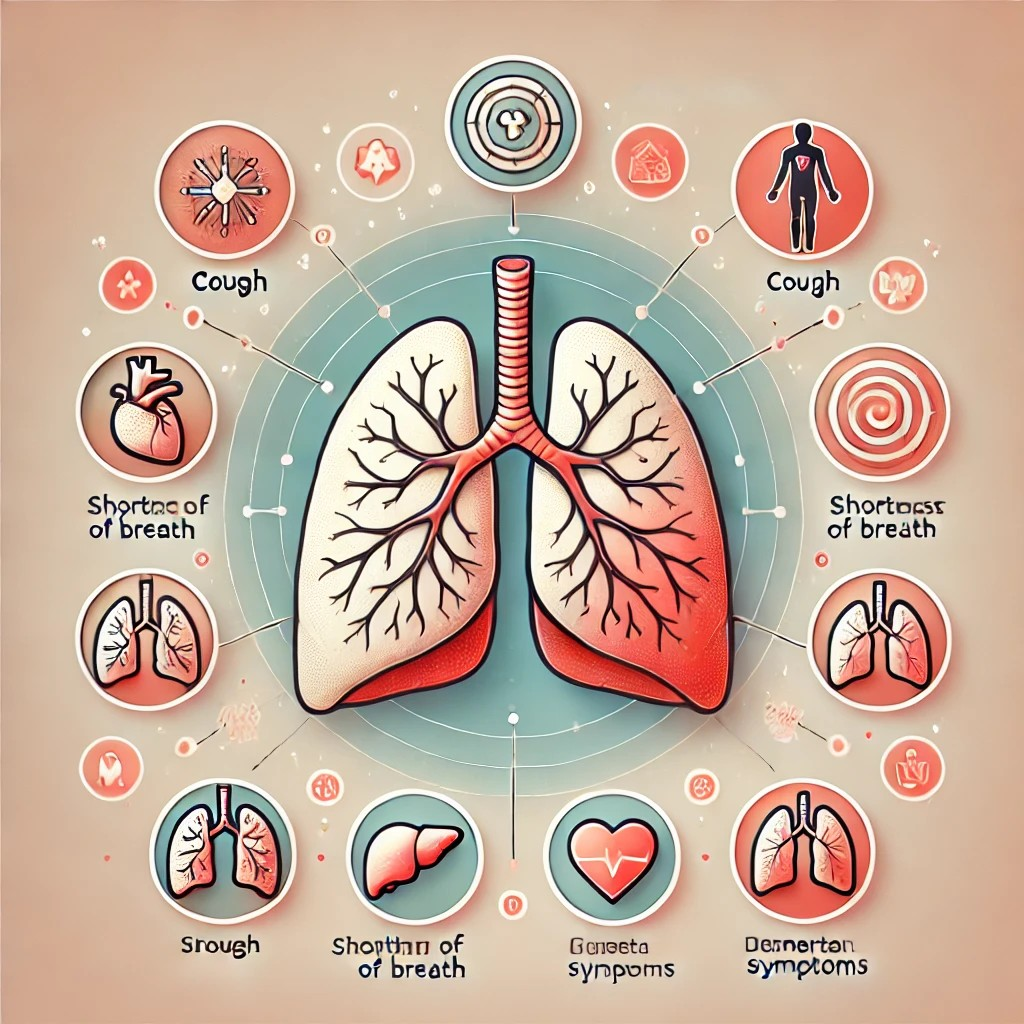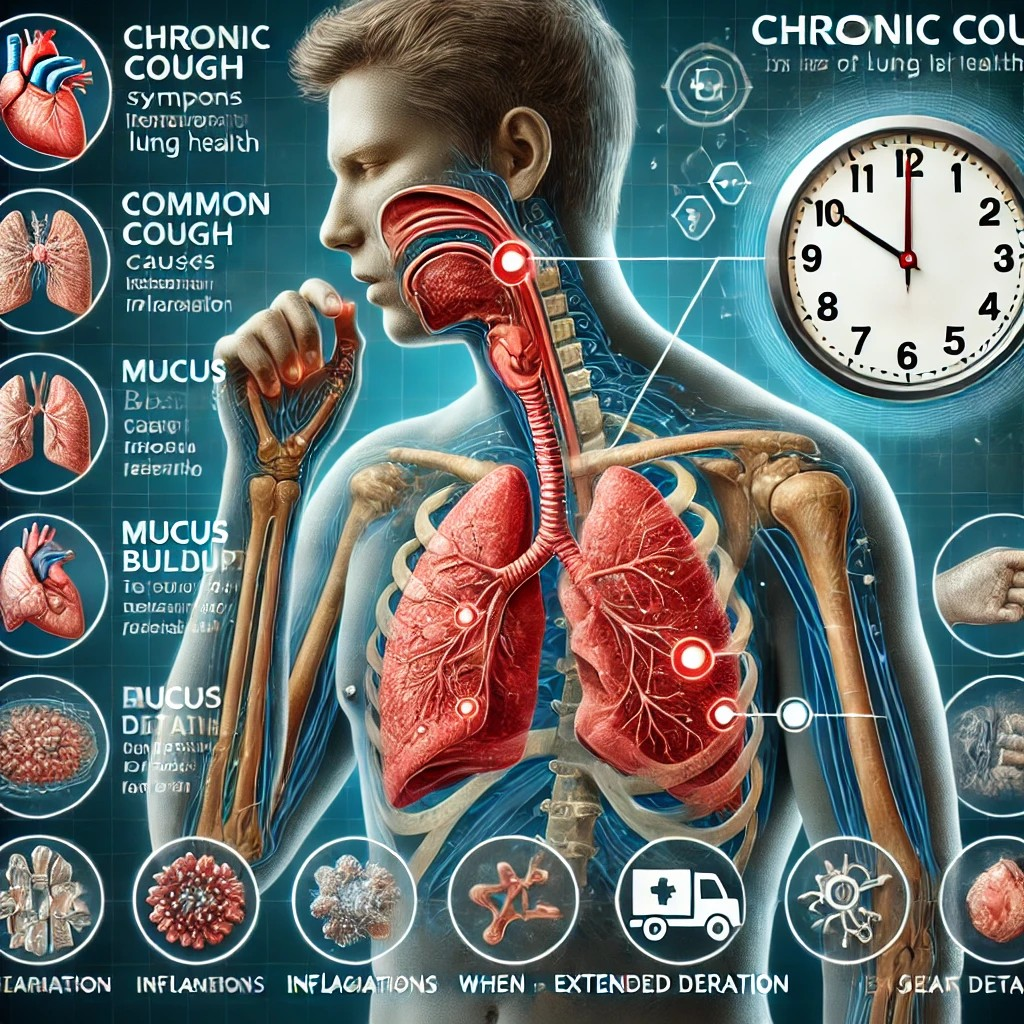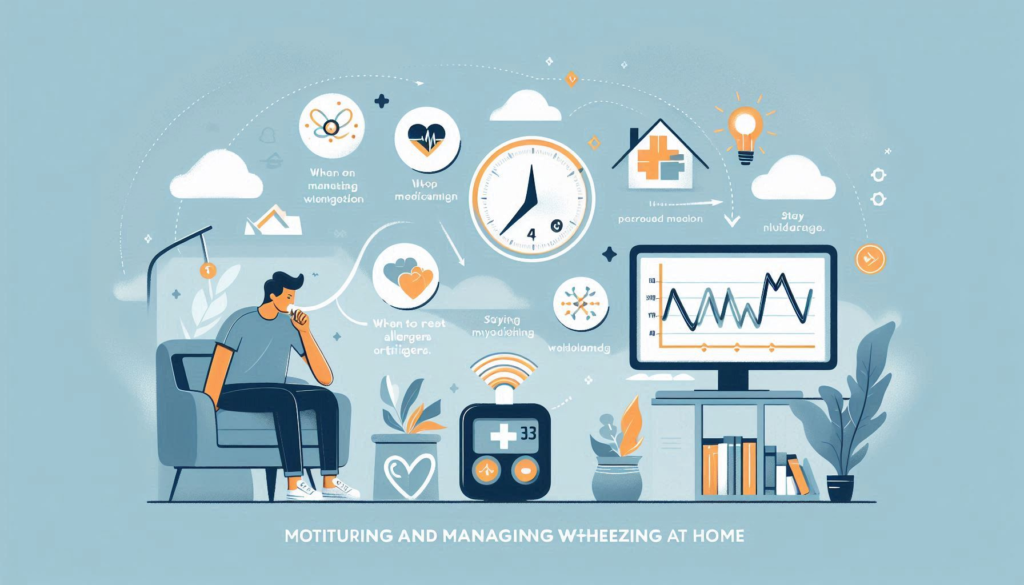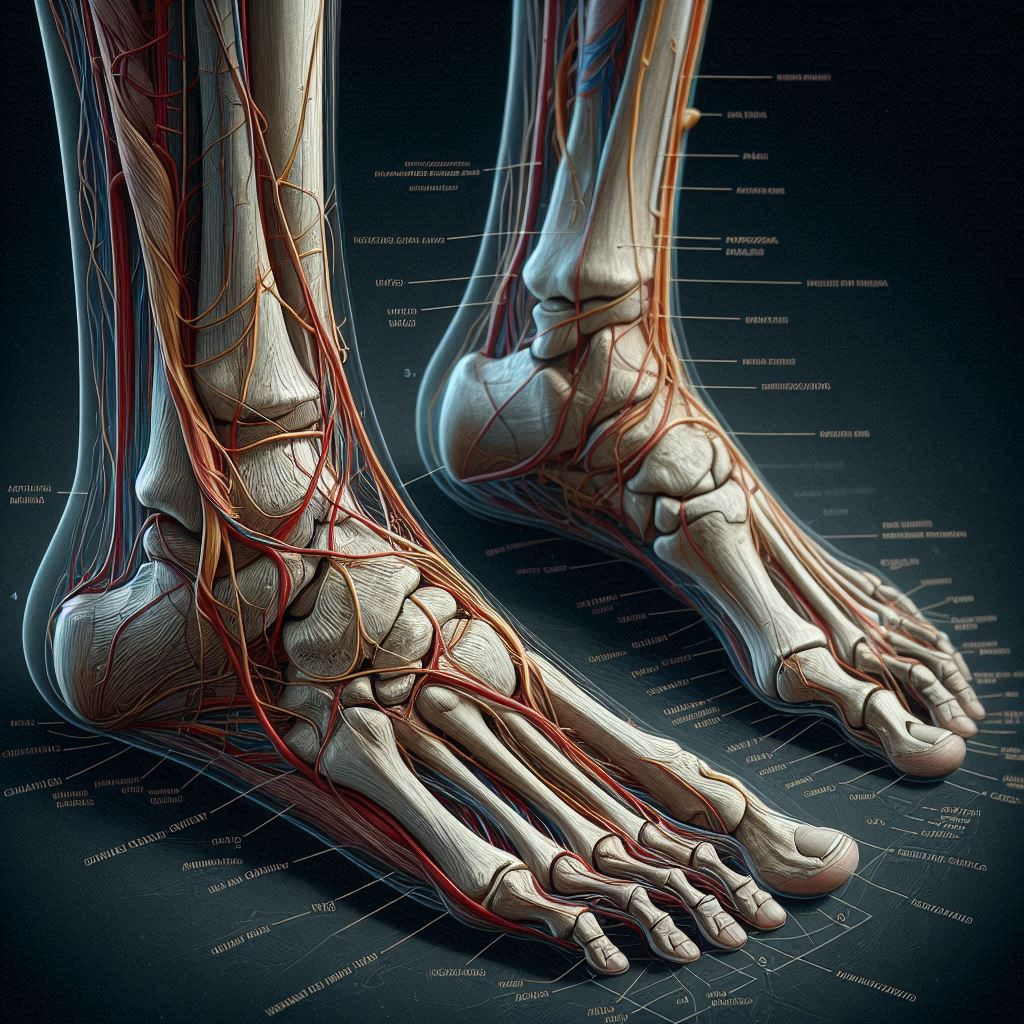
Lung Diseases: 4 Dangerous Symptoms to Watch
Lung Diseases: 4 Dangerous Symptoms to Watch
Learn about the 4 dangerous symptoms of lung diseases you should never ignore. Early detection can save lives. Stay informed and protect your health.

Introduction
Brief Overview of Lung Diseases and Their Impact on Health
Lung diseases encompass a wide range of conditions that affect the lungs and respiratory system. These diseases can significantly impact a person’s ability to breathe and perform daily activities. Common lung diseases include asthma, chronic obstructive pulmonary disease (COPD), lung cancer, and pneumonia. The impact of lung diseases on health can be profound, leading to reduced quality of life, increased healthcare costs, and, in severe cases, death.
Importance of Recognizing Dangerous Symptoms Early
Early recognition of dangerous symptoms associated with lung diseases is crucial for timely diagnosis and treatment. Identifying symptoms early can prevent the progression of the disease, reduce complications, and improve outcomes. Being aware of the warning signs allows individuals to seek medical attention promptly, which can be life-saving.
Overview of the 4 Dangerous Symptoms to Watch For
This guide highlights four dangerous symptoms of lung diseases that should never be ignored: chronic cough, shortness of breath, chest pain, and persistent wheezing. Understanding these symptoms and knowing when to seek medical help can make a significant difference in managing lung health.
Section 1: Chronic Cough
Explanation of What Constitutes a Chronic Cough
A chronic cough is defined as a cough that persists for eight weeks or longer in adults or four weeks in children. A persistent cough can be a sign of an underlying lung condition that necessitates medical attention, as opposed to a cough that is only present temporarily due to a cold or the flu.
Common Causes of Chronic Cough Related to Lung Diseases
- Asthma: A condition where the airways become inflamed and narrowed, leading to coughing, wheezing, and shortness of breath.
- Chronic Obstructive Pulmonary Disease (COPD): A group of lung diseases, including emphysema and chronic bronchitis, that cause long-term breathing problems and a persistent cough.
- Lung Cancer: A serious condition where abnormal cells grow uncontrollably in the lungs, often causing a chronic cough, sometimes with blood.
- Pulmonary Fibrosis: A condition where the lung tissue becomes scarred and stiff, leading to a persistent cough and difficulty breathing.
When to Seek Medical Attention for a Chronic Cough
Seek medical attention if your cough:
- Persists for more than eight weeks.
- Is accompanied by other symptoms such as shortness of breath, chest pain, or weight loss.
- Produces blood or discolored phlegm.
- Interferes with your daily activities or sleep.
Case Studies or Examples of Chronic Cough Leading to Diagnosis
- Case Study 1: A 55-year-old smoker with a chronic cough and weight loss was diagnosed with lung cancer after a chest X-ray and biopsy.
- Case Study 2: A 30-year-old non-smoker with a persistent cough and wheezing was diagnosed with asthma after pulmonary function tests.
Section 2: Shortness of Breath
Description of Shortness of Breath and Its Severity Levels
Shortness of breath, also known as dyspnea, is the sensation of not being able to get enough air. It can range from mild, temporary discomfort to severe, ongoing difficulty breathing. Severity levels include:
- Mild: Occasional shortness of breath during physical activity.
- Moderate: Frequent shortness of breath that affects daily activities.
- Severe: Constant shortness of breath, even at rest, that requires immediate medical attention.
Lung Diseases Commonly Associated with Shortness of Breath
- Asthma: Causes episodes of wheezing, breathlessness, and chest tightness.
- COPD: Leads to progressive shortness of breath, especially during physical exertion.
- Pulmonary Embolism: A blood clot in the lungs that causes sudden, severe shortness of breath.
- Interstitial Lung Disease: A group of disorders that cause scarring of lung tissue, leading to chronic shortness of breath.
How to Differentiate Between Normal and Concerning Shortness of Breath
- Normal: Shortness of breath after intense physical activity or in high altitudes.
- Concerning: Shortness of breath that comes on suddenly, is severe, or is present along with other symptoms like chest pain, vertigo, or fainting.
Tips for Managing Shortness of Breath and When to See a Doctor
- Breathing Exercises: Practice diaphragmatic breathing and pursed-lip breathing to improve airflow.
- Avoid Triggers: Identify and avoid allergens or irritants that can worsen symptoms.
- Stay Active: Engage in regular, moderate exercise to strengthen respiratory muscles.
- Seek Medical Help: If shortness of breath is sudden, severe, or persistent, consult a healthcare professional immediately.

Chest Pain and Lung Health: Recognizing Warning Signs
Chest pain can be alarming, especially when it may indicate a serious lung condition. Here, we’ll explore the types of chest pain related to lung diseases, how to recognize pain that requires medical attention, other possible causes of chest pain, and immediate steps to take if severe pain occurs.
1. Types of Chest Pain Related to Lung Diseases
Lung-related chest pain can present in various ways, depending on the underlying condition:
- Sharp or Stabbing Pain: Often associated with conditions like pleurisy, an inflammation of the lining around the lungs, this pain is sharp and worsens with deep breaths or coughing.
- Dull or Aching Pain: Conditions like pneumonia or lung infections may cause a persistent, dull ache in the chest area. This pain is usually more localized and may increase with certain movements or deep breathing.
- Pressure or Tightness: A feeling of pressure or tightness in the chest could be related to asthma or chronic obstructive pulmonary disease (COPD), especially during flare-ups when airways become restricted.
Understanding the type of pain can help provide insight into the potential cause and urgency of the situation.
2. Identifying Chest Pain That May Indicate a Serious Lung Condition
Certain chest pain characteristics can signal a more serious lung issue:
- Pain that Radiates: If the pain spreads from the chest to the shoulders, neck, or jaw, it could indicate a serious condition like a pulmonary embolism (a blood clot in the lung).
- Severe and Sudden Pain: Intense, sudden chest pain—especially if it worsens with breathing or coughing—may be a symptom of a pneumothorax (collapsed lung).
- Shortness of breath, lightheadedness, sweating, or blue lips are associated symptoms that indicate an emergency. These symptoms can be linked to serious issues like a heart attack or a major lung condition.
Recognizing these signs can be life-saving, as certain conditions require immediate medical intervention.
3. Other Potential Causes of Chest Pain and How to Rule Them Out
While chest pain often raises concerns about the heart or lungs, other conditions may also cause discomfort:
- Muscle Strain: Physical strain from exercise or lifting heavy objects can lead to muscle-related chest pain. This type usually improves with rest and is typically tender to touch.
- Heartburn or Acid Reflux: Gastroesophageal reflux disease (GERD) can cause a burning sensation in the chest that mimics heart pain. Symptoms often worsen after eating and can be relieved with antacids.
- Anxiety and Panic Attacks: Emotional distress can lead to chest tightness, rapid heartbeat, and shortness of breath. These symptoms can be managed with relaxation techniques but may require medical advice if recurrent.
By noting the pattern and characteristics of the pain, one can better differentiate between serious lung issues and other causes.
4. Immediate Steps to Take if Experiencing Severe Chest Pain
If you experience severe chest pain, especially with concerning symptoms like shortness of breath, nausea, or sweating, take these immediate steps:
- Call Emergency Services: Dial emergency services (e.g., 911) if pain is intense or if you have additional symptoms like dizziness or difficulty breathing.
- Stay Calm and Rest: Try to remain as calm as possible and avoid exerting yourself. Sit or lie down in a comfortable position.
- Avoid eating or drinking until you see a doctor in order to prevent further discomfort.
- Loosen Tight Clothing: Loosen any restrictive clothing to aid with breathing and relieve discomfort.

Persistent Wheezing: Causes, Management, and When to Seek Help
Wheezing—a high-pitched, whistling sound during breathing—can signal various lung conditions, especially if it’s persistent. Understanding the causes of wheezing, how to monitor and manage it at home, and when to seek emergency care can help in maintaining lung health and ensuring timely intervention.
1. Definition and Causes of Wheezing
Wheezing occurs when airways become narrowed or inflamed, making it difficult for air to flow through. This narrowing causes a whistling or squeaky sound, especially noticeable when exhaling. Common causes of wheezing include:
- Inflammation: Conditions that cause airway inflammation, such as asthma or bronchitis, can lead to persistent wheezing.
- Obstruction: Mucus buildup from infections, allergies, or chronic conditions can partially block airways, resulting in wheezing.
- Bronchospasm: Spasms in the airway muscles, often triggered by exercise or irritants, can cause temporary or recurrent wheezing episodes.
Identifying the cause of wheezing is essential, as it often reflects an underlying issue with the respiratory system.

2. Lung Diseases That Commonly Cause Wheezing
Several lung conditions are frequently associated with persistent wheezing:
- Asthma: A chronic condition where inflamed airways cause recurring wheezing, especially during flare-ups triggered by allergens or exertion.
- Chronic Obstructive Pulmonary Disease (COPD): COPD, which includes emphysema and chronic bronchitis, often leads to wheezing as the lungs’ airways become damaged and inflamed.
- Bronchitis: Both acute and chronic bronchitis can cause wheezing due to airway irritation and mucus buildup.
- In some cases, pneumonia can lead to wheezing, particularly when inflammation affects the smaller airways in the lungs.
These conditions often require medical management, and persistent wheezing is a key symptom to monitor.
3. How to Monitor and Manage Wheezing at Home
Managing wheezing at home involves a combination of monitoring symptoms and taking preventative steps.
- Use a Peak Flow Meter: A peak flow meter can help track lung function and detect worsening airway narrowing. Keeping a record of readings can be helpful for healthcare providers.
- Medication Management: For conditions like asthma, using prescribed inhalers or other medications as directed can help keep wheezing under control. It’s essential to follow a healthcare provider’s guidance closely.
- Avoid Triggers: Common triggers for wheezing include smoke, dust, pollen, and cold air. Reducing exposure to these irritants can minimize wheezing episodes.
- Stay Hydrated: Drinking enough water can help thin mucus, making it easier to clear from the airways.
Regular monitoring helps track changes in wheezing and provides insight into potential triggers or worsening symptoms.
4. When to Seek Emergency Care for Wheezing
While wheezing can often be managed at home, certain situations require immediate medical attention:
- Severe Difficulty Breathing: If breathing becomes labored or you feel like you’re not getting enough air, seek emergency care.
- Bluish Lips or Fingertips: This can indicate low oxygen levels, a serious symptom that requires urgent evaluation.
- No Relief from Medicines: If prescribed inhalers or other medications do not alleviate wheezing, medical help is needed.
- Rapid Onset of Severe Wheezing: Sudden, intense wheezing can signal a serious allergic reaction or a severe asthma attack, both of which require prompt intervention.
Knowing when to seek medical help can be critical in preventing complications from conditions that cause wheezing.
It’s important not to ignore persistent wheezing, especially if it’s getting worse or coming along with breathing difficulties. By monitoring symptoms, managing triggers, and knowing when to seek help, individuals can better handle wheezing and maintain respiratory health.
FAQs
- What are the common symptoms of lung diseases? Common symptoms include chronic cough, shortness of breath, chest pain, and persistent wheezing.
- How can I tell if my cough is related to a lung disease? If your cough lasts for more than a few weeks, comes with additional symptoms like chest pain or shortness of breath, or produces blood, a lung disease may be to blame.
- What should I do if I experience shortness of breath? If shortness of breath is sudden, severe, or accompanied by chest pain, seek medical attention immediately. For chronic shortness of breath, consult a healthcare provider.
- Can chest pain be a sign of lung disease? Yes, chest pain can be a symptom of lung diseases such as pneumonia, pulmonary embolism, or lung cancer. It is important to seek medical evaluation for chest pain.
- What causes wheezing, and when should I be concerned? Asthma, COPD, or other lung conditions can cause coughing. If wheezing is persistent, severe, or accompanied by other symptoms, seek medical advice.
- How can I prevent lung diseases? Avoid smoking, reduce exposure to pollutants, maintain a healthy lifestyle, and get regular check-ups to prevent lung diseases.
- Are there any home remedies for managing lung disease symptoms? Home remedies include staying hydrated, using a humidifier, practicing breathing exercises, and avoiding triggers like smoke and allergens.
- What tests are used to diagnose lung diseases? Common tests include chest X-rays, CT scans, pulmonary function tests, and blood tests.
- Can lung diseases be cured? Some lung diseases can be managed or treated effectively, but not all can be cured. Early detection and treatment are crucial.
- What lifestyle changes can improve lung health? Quitting smoking, exercising regularly, eating a balanced diet, and avoiding pollutants can improve lung health.
Managing wheezing at home involves a combination of monitoring symptoms and taking preventative steps. Regular monitoring helps track changes in wheezing and provides insight into potential triggers or worsening symptoms. However, knowing when to seek medical attention is crucial, particularly if persistent wheezing gets worse or comes with breathing problems. By monitoring symptoms, managing triggers, and promptly seeking help when needed, individuals can effectively handle wheezing and maintain respiratory health.


